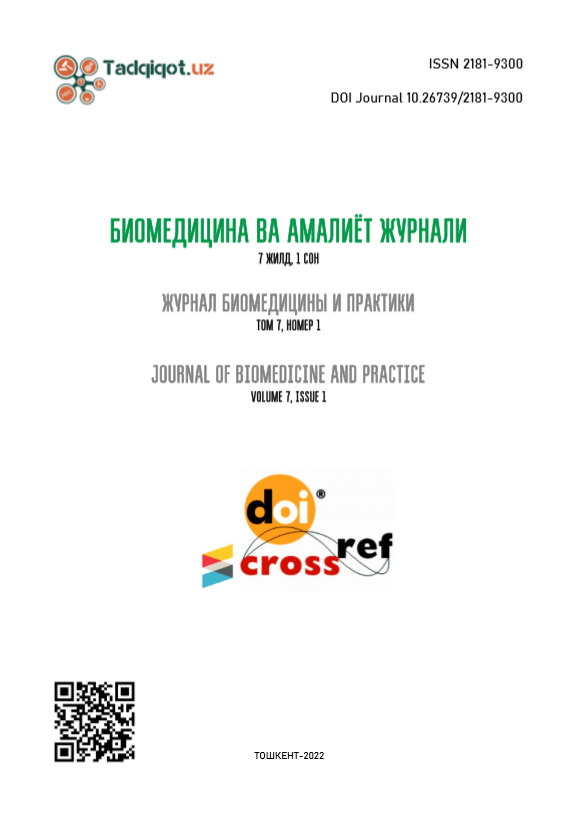ASPECTS OF DEVELOPMENT OF ANKLE ARTHROSCOPY.
Keywords:
arthroscopy of the ankle joint, arthrosis of the ankle joint, osteochondropathy of the talus boneAbstract
The purpose of the study. Evaluation of the results of arthroscopic treatment of pathology of the ankle joint.
Materials and methods. The work is based on the experience of treating 20 patients (including 12 women and 8 men), arthroscopy of the ankle joint was performed. All patients were of working age. The average age was 38 years (from 20 to 58 years). Indications for surgery were: osteochondropathy of the talus bone in 4 (20%) patients, osteoarthritis with the presence of bone impingement in 5 (25%) patients, anterior soft tissue impingement syndrome in 4 (20%), chronic lateral instability in 2 (10%) patients, osteo—chondral fractures in 5 (25%) patients.
The results of the study. The results obtained confirmed the high diagnostic significance of arthroscopic intervention on the ankle joint, which allows, taking into account the nature of the cartilage lesion, to determine the optimal tactics of the treatment process. The data of the functional study indicate a significant improvement in the average indicators of the ankle joint function from 31.6 points before surgery to 47.5 points at the time of the patient's repeated treatment. The pain in the ankle joint, which were the main complaints before the operation, disappeared or decreased significantly, as well as lameness disappeared, the distance that the patient can overcome and the amount of movement in the joint increased.
Conclusions. Autografts from the tendons of the popliteal hip flexors have been successfully used to restore the The use of arthroscopic surgery, since it is a minimally invasive method, makes it possible to ensure, in comparison with open interventions, an earlier start of rehabilitation measures in the postoperative period, reduce the duration of inpatient treatment, accelerate the recovery of the patient.
References
Архипов В., Лычагин А.В. Современные аспекты лечения посттравматического
деформирующего артроза голеностопного сустава. Вести, травматологии и ортопедии. 2000; 4: 64-67.
Маматкулов К.М.,Кобилов А.У. Современный взгляд на лечение патологии голеностопного сустава. Travmatologiya, ortopediya va reabilitatsiya traumatology, orthopaedics and rehabilitation, №2 2021
Barber F.A., Britt B.T., Ratliff H.W., Sutker A.N. Arthroscopic surgery of the ankle. Orthop. Rev. 2017; 17: 446-451.
Carson W.G., Andrews J.R. Arthroscopy of the ankle. Clin Sports Med. 2018; 6: 503-512.
Demaziere A., Ogilvie-Harris D.J. Operative arthroscopy of the ankle. 107 cases. Osteoartic. 2018; 58: 93-97.
Ferkel R.D., Fischer S.P. Progress in ankle arthroscopy. Clin. Orthop. 2017; 240: 210-220.
Hopper M.A., Robinson Ph. Ankle impingement syndromes. Radiol. Clin. N. Am. 2008; 46: 957-971.
Martin D.F., Baker C.L., Curl W.W., Andrews J.R., Robie D.B., Haas A.F. Operative ankle arthroscopy. Long term follow up. Am. J. Sports. Med. 2020; 17: 16-23.
Small N.C. Complications in arthroscopic surgery. Arthroscopy. 2019; 4: 215-221.
Sprague N.F. (2019): Complications in arthroscopy. Raven Press, New York, P. 212-223.
Stoller D.W., Ferkel R.D. Magnetic resonance imaging in orthopedics and sports medicine. Philadelphia, USA, 2017; 1049.

